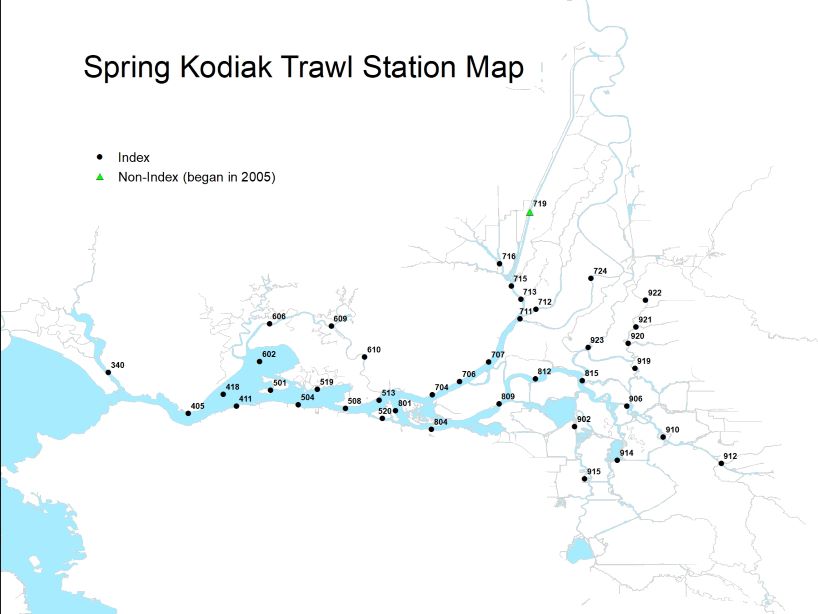Project Overview
The Spring Kodiak Trawl was discontinued in 2023. Information on this web page will remain for archival purposes.
The Spring Kodiak Trawl began in 2002 and determines the relative abundance and distribution of spawning Delta Smelt. The U.S. Fish and Wildlife Service’s Biological Opinion for Delta Smelt has criteria pertaining to Delta Smelt protection based on SKT Survey results. Survey results are provided in near-real time and are used by State and Federal resource managers to assess the risk of entrainment of Delta Smelt at the Central Valley and State Water projects. The project also collects information on other fishes collected in the upper water column.
Methods
The Spring Kodiak Trawl samples 40 fixed sites once per month from December through May. The net is 65’ long with a mouth opening that is 25’ wide and 6’ deep. The net is composed of five panels of decreasing mesh size, measuring 2” at the mouth and tapering to ¼” at the cod end. At each station, a 10 minute surface tow is conducted by using two boats to spread the net mouth fully open. All fish, shrimp, and jellyfish collected in the tow are identified and enumerated. Delta smelt are further processed to identify gender and maturity.
 Map of the current Spring Kodiak Trawl sampling locations. (click to enlarge in new window)
Map of the current Spring Kodiak Trawl sampling locations. (click to enlarge in new window)
Relevant Publications
Bibliography available online
- Castillo, G.C., Damon, L.J. and Hobbs, J.A., 2018. Community patterns and environmental associations for pelagic fishes in a highly modified estuary. Marine and Coastal Fisheries, 10(5), pp.508-524.
- Damon, L.J., Slater, S.B., Baxter, R.D. and Fujimura, R.W., 2016. Fecundity and reproductive potential of wild female delta smelt in the upper San Francisco Estuary, California. California Fish and Game, 102(4), pp.188-210.
Related Information